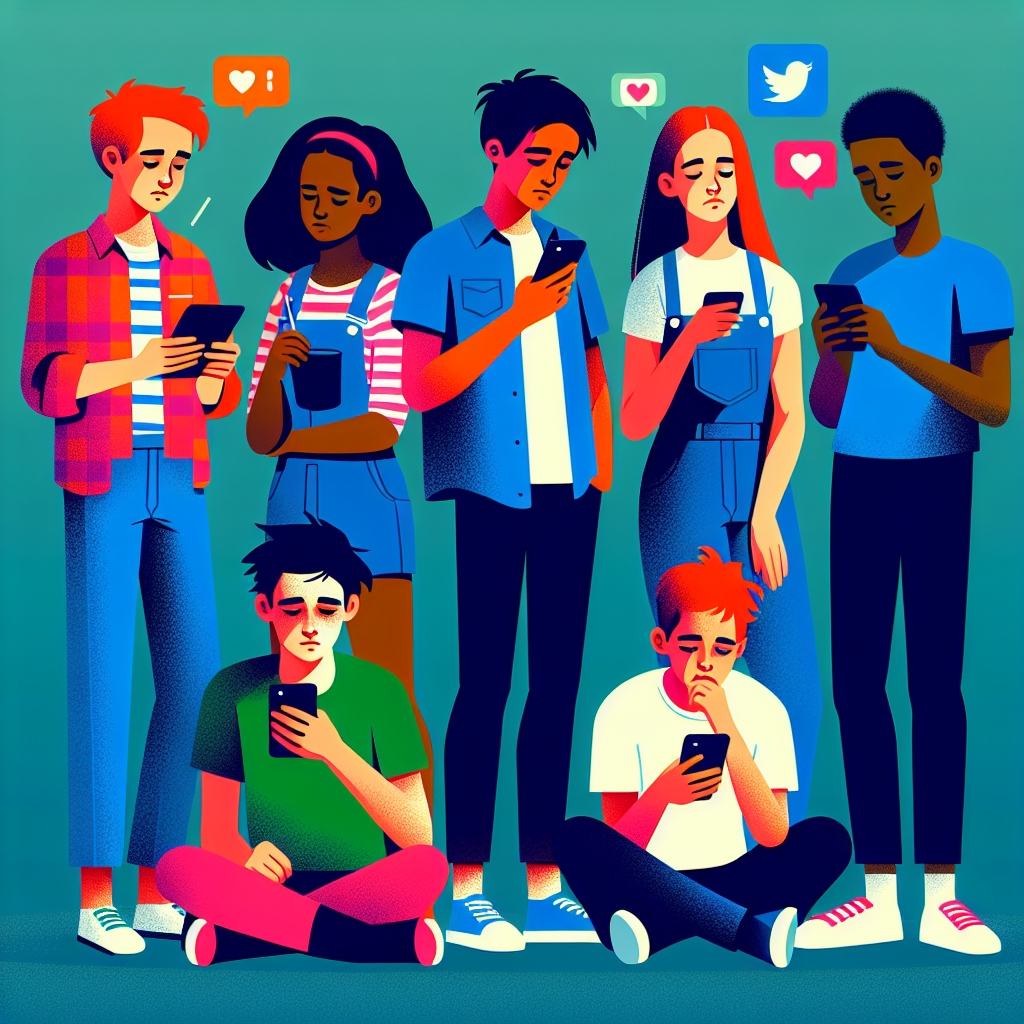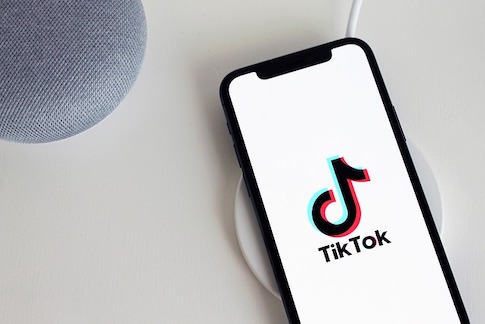A study looked at how teenagers use social media and found some problems. It checked nearly 280,000 kids aged 11, 13, and 15 from 44 countries. In 2022, 11% of these kids used social media in a problematic way, up from 7% in 2018. The study says we need to help kids use social media in a healthy way, especially 13-year-olds, with girls having more issues than boys.
The study also found that many teenagers spend a lot of time online. Some kids are online all day talking to friends. While this can help them feel connected, a few kids show signs of addiction. These signs include ignoring other activities, arguing about online time, lying about how long they are online, and feeling bad when not online.
The World Health Organization shared this study, showing both good and bad sides of social media. Dr. Hans Henri P Kluge from WHO says kids need to learn how to use the internet wisely. The study highlights that governments, health workers, teachers, and parents should work together to help kids use social media safely. This is important to keep kids’ minds healthy and happy.
Original news source: Sharp rise in problematic teenage social media use, study says (BBC)
🎧 Listen:
Slow
Normal
Fast
📖 Vocabulary:
| 1 | problematic | Causing trouble or difficulty |
| 2 | addiction | Not being able to stop doing something |
| 3 | ignoring | Not paying attention to something |
| 4 | arguing | Having a disagreement or fight with words |
| 5 | lying | Not telling the truth |
| 6 | connected | Feeling close or linked to someone or something |
| 7 | addiction | Not being able to stop doing something |
| 8 | highlights | Points out or shows something important |
| 9 | governments | Groups of people who run a country or place |
| 10 | workers | People who do jobs or tasks |
| 11 | safely | Without danger or harm |
| 12 | healthy | Being well and strong in body and mind |
Group or Classroom Activities
Warm-up Activities:
– Charades
Instructions: Write down key words related to social media use from the article on separate pieces of paper. Have students come up and pick a word, then act it out without speaking while the rest of the class guesses what it is.
– News Summary
Instructions: Divide the class into small groups and have each group summarize the main points of the article in their own words. Then, have one student from each group present the summary to the class.
– Vocabulary Pictionary
Instructions: Write down key vocabulary words from the article on the board. Divide the class into two teams. One student from each team comes up and selects a word, then has to draw it while their team tries to guess the word.
– Opinion Poll
Instructions: Create a list of statements related to social media use based on the article (e.g., “Teenagers should have limits on their social media use”). Have students move around the room and indicate whether they agree or disagree with each statement, then discuss their opinions in pairs or small groups.
– Future Predictions
Instructions: In pairs or small groups, have students discuss and make predictions about the future of social media and teenagers. Encourage them to use the information from the article to support their ideas. Then, have each group share their predictions with the class.
🤔 Comprehension Questions:
1. What did the study look at?
2. How many kids were checked in the study?
3. What percentage of kids used social media in a problematic way in 2022?
4. Why is it important to help 13-year-olds use social media in a healthy way?
5. What are some signs of online addiction mentioned in the study?
6. Who shared the study about teenagers and social media?
7. Why is it important for governments, health workers, teachers, and parents to work together according to the study?
Go to answers ⇩
🎧✍️ Listen and Fill in the Gaps:
A study looked at how teenagers use social (1)______ and (2)______ some problems. It checked nearly 280,000 kids aged 11, 13, and 15 from 44 countries. In 2022, 11% of these kids (3)______ social media in a problematic way, up from 7% in 2018. The study says we need to help kids use social media in a healthy way, especially 13-year-olds, with girls (4)______ more issues than (5)______.
The study also found that (6)______ teenagers spend a lot of time online. Some kids are online all day talking to friends. While this can help them feel connected, a few kids show signs of addiction. These signs include ignoring other activities, arguing about online (7)______, lying about how long they are online, and feeling bad when not online.
The World (8)______ Organization shared this (9)______, showing both good and bad sides of social media. Dr. Hans Henri P Kluge from WHO (10)______ kids need to learn how to use the internet wisely. The study highlights that governments, health workers, teachers, and (11)______ should work together to help kids use social media safely. This is important to keep kids’ minds (12)______ and happy.
Go to answers ⇩
💬 Discussion Questions:
Students can ask a partner these questions, or discuss them as a group.
1. What is social media?
2. How would you feel if you were online all day talking to friends?
3. Do you like spending a lot of time online? Why or why not?
4. Do you think it’s important to use social media in a healthy way? Why?
5. What are some signs of being addicted to the internet?
6. How do you feel when you can’t go online?
7. What do you think about kids needing to learn how to use the internet wisely?
8. Do you think it’s good for governments, health workers, teachers, and parents to work together to help kids with social media? Why or why not?
9. How do you think social media can affect kids’ minds?
10. Why do you think girls might have more issues with social media than boys?
11. What can kids do to make sure they are using social media safely?
12. How can we balance using social media and other activities in our lives?
Individual Activities
📖💭 Vocabulary Meanings:
Match each word to its meaning.
Words:
1. problematic
2. addiction
3. ignoring
4. arguing
5. lying
6. connected
7. addiction
8. highlights
9. governments
10. workers
11. safely
12. healthy
Meanings:
(A) Points out or shows something important
(B) Not being able to stop doing something
(C) Feeling close or linked to someone or something
(D) Not being able to stop doing something
(E) Not telling the truth
(F) People who do jobs or tasks
(G) Without danger or harm
(H) Having a disagreement or fight with words
(I) Not paying attention to something
(J) Groups of people who run a country or place
(K) Being well and strong in body and mind
(L) Causing trouble or difficulty
Go to answers ⇩
🔡 Multiple Choice Questions:
1. How many kids were checked in the study about social media?
(a) 100,000
(b) Nearly 280,000
(c) 500,000
(d) 50,000
2. What age groups were included in the study?
(a) 10, 12, and 14
(b) 9, 11, and 13
(c) 12, 14, and 16
(d) 11, 13, and 15
3. In 2022, what percentage of kids were using social media in a problematic way?
(a) 5%
(b) 15%
(c) 11%
(d) 20%
4. Who did the study say needs help using social media in a healthy way?
(a) 13-year-olds
(b) 9-year-olds
(c) 16-year-olds
(d) 18-year-olds
5. What signs of addiction did the study find in some teenagers?
(a) Doing homework
(b) Eating healthy
(c) Ignoring other activities
(d) Sleeping well
6. Who shared the study about social media and teenagers?
(a) The World Health Organization
(b) NASA
(c) Disney
(d) McDonald’s
7. According to Dr. Hans Henri P Kluge, what do kids need to learn how to do wisely?
(a) Play video games
(b) Use the internet
(c) Watch TV
(d) Read books
8. Who should work together to help kids use social media safely?
(a) Celebrities
(b) Athletes
(c) Scientists
(d) Governments, health workers, teachers, and parents
Go to answers ⇩
🕵️ True or False Questions:
1. Signs of addiction to social media include ignoring other activities and lying about online time.
2. A study looked at how kids use social media and found no problems.
3. In 2022, 11% of kids had NO issues with social media, up from 7% in 2018.
4. The World Health Organization shared the study to show only the bad sides of social media.
5. Girls had more social media problems than boys, according to the study.
6. The study says 13-year-olds DON’T need help using social media in a healthy way.
7. Some teenagers spend all day online talking to friends.
8. Nearly 280,000 kids from 44 countries were checked in the study.
Go to answers ⇩
📝 Write a Summary:
Write a summary of this news article in two sentences.
Check your writing now with the best free AI for English writing!
Writing Questions:
Answer the following questions. Write as much as you can for each answer.
Check your answers with our free English writing assistant!
1. What did a study look at about teenagers and social media?
2. How many kids were checked in the study?
3. What percentage of kids used social media in a problematic way in 2022?
4. What are some signs of addiction to social media mentioned in the article?
5. Who does the World Health Organization say should work together to help kids use social media safely?
✅ Answers
🤔✅ Comprehension Question Answers:
1. What did the study look at?
The study looked at how teenagers use social media.
2. How many kids were checked in the study?
Nearly 280,000 kids aged 11, 13, and 15 from 44 countries were checked in the study.
3. What percentage of kids used social media in a problematic way in 2022?
In 2022, 11% of kids used social media in a problematic way.
4. Why is it important to help 13-year-olds use social media in a healthy way?
It’s important to help 13-year-olds because they have more issues with social media, especially girls.
5. What are some signs of online addiction mentioned in the study?
Some signs of online addiction include ignoring other activities, arguing about online time, lying about how long they are online, and feeling bad when not online.
6. Who shared the study about teenagers and social media?
The World Health Organization (WHO) shared the study about teenagers and social media.
7. Why is it important for governments, health workers, teachers, and parents to work together according to the study?
It’s important for them to work together to help kids use social media safely and keep their minds healthy and happy.
Go back to questions ⇧
🎧✍️✅ Listen and Fill in the Gaps Answers:
(1) media
(2) found
(3) used
(4) having
(5) boys
(6) many
(7) time
(8) Health
(9) study
(10) says
(11) parents
(12) healthy
Go back to questions ⇧
📖💭✅ Vocabulary Meanings Answers:
1. problematic
Answer: (L) Causing trouble or difficulty
2. addiction
Answer: (B) Not being able to stop doing something
3. ignoring
Answer: (I) Not paying attention to something
4. arguing
Answer: (H) Having a disagreement or fight with words
5. lying
Answer: (E) Not telling the truth
6. connected
Answer: (C) Feeling close or linked to someone or something
7. addiction
Answer: (B) Not being able to stop doing something
8. highlights
Answer: (A) Points out or shows something important
9. governments
Answer: (J) Groups of people who run a country or place
10. workers
Answer: (F) People who do jobs or tasks
11. safely
Answer: (G) Without danger or harm
12. healthy
Answer: (K) Being well and strong in body and mind
Go back to questions ⇧
🔡✅ Multiple Choice Answers:
1. How many kids were checked in the study about social media?
Answer: (b) Nearly 280,000
2. What age groups were included in the study?
Answer: (d) 11, 13, and 15
3. In 2022, what percentage of kids were using social media in a problematic way?
Answer: (c) 11%
4. Who did the study say needs help using social media in a healthy way?
Answer: (a) 13-year-olds
5. What signs of addiction did the study find in some teenagers?
Answer: (c) Ignoring other activities
6. Who shared the study about social media and teenagers?
Answer: (a) The World Health Organization
7. According to Dr. Hans Henri P Kluge, what do kids need to learn how to do wisely?
Answer: (b) Use the internet
8. Who should work together to help kids use social media safely?
Answer: (d) Governments, health workers, teachers, and parents
Go back to questions ⇧
🕵️✅ True or False Answers:
1. Signs of addiction to social media include ignoring other activities and lying about online time. (Answer: True)
2. A study looked at how kids use social media and found no problems. (Answer: False)
3. In 2022, 11% of kids had NO issues with social media, up from 7% in 2018. (Answer: False)
4. The World Health Organization shared the study to show only the bad sides of social media. (Answer: False)
5. Girls had more social media problems than boys, according to the study. (Answer: True)
6. The study says 13-year-olds DON’T need help using social media in a healthy way. (Answer: False)
7. Some teenagers spend all day online talking to friends. (Answer: True)
8. Nearly 280,000 kids from 44 countries were checked in the study. (Answer: True)
Go back to questions ⇧













